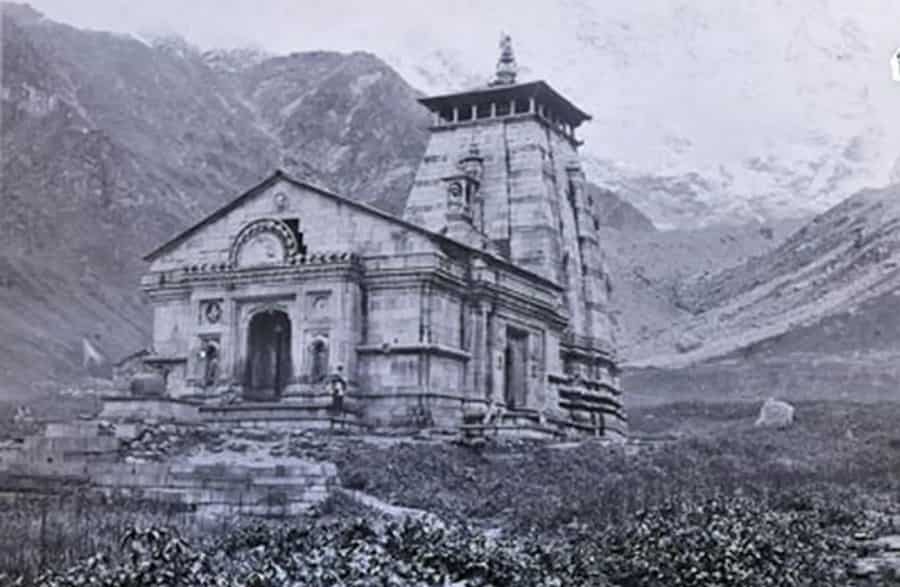The Kedarnath Temple, located in the majestic Himalayan range in Uttarakhand, India, stands as a testament to centuries of devotion and spirituality. As one of the holiest shrines in Hindu mythology, this ancient temple holds great significance for millions of devotees worldwide. Embark on a captivating journey as we delve into the rich tapestry of Kedarnath Temple’s history, exploring the legends, architectural wonders, and profound spiritual experiences that continue to captivate visitors to this day.
Kedarnath Temple History: Tracing the Divine Origins
Inception Amidst Mythology: The Legend of Kedarnath
According to ancient Hindu mythology, the Kedarnath Temple finds its roots in the epic tale of the Mahabharata. It is believed that after the great war, the Pandavas sought redemption for their sins by seeking the blessings of Lord Shiva. In disguise, Lord Shiva eluded them and settled in Kedarnath, where he eventually revealed himself, absolving the Pandavas of their guilt. This sacred encounter gave birth to the revered Kedarnath Temple.

The Architecture That Echoes Divinity
Stepping into the premises of Kedarnath Temple is akin to entering a realm where architecture and spirituality intertwine harmoniously. The temple’s architectural style showcases a blend of ancient North Indian and Dravidian influences. Built with massive stone slabs, the temple stands at an impressive height of 3,583 meters (11,755 feet) above sea level, nestled amidst the awe-inspiring peaks of the Himalayas.
A Marvelous Structure: The Intricacies of Kedarnath Temple
The Kedarnath Temple is renowned for its intricate craftsmanship and structural brilliance. The sanctum sanctorum, or garbhagriha, houses the presiding deity, Lord Kedarnath, in the form of a naturally formed conical lingam. The temple also boasts a magnificent assembly hall, embellished with elaborate carvings of gods, goddesses, and celestial beings. These artistic details serve as a testament to the skilled craftsmanship of the ancient artisans.
FAQs (Frequently Asked Questions) about Kedarnath Temple History
1. When was the Kedarnath Temple built?
The Kedarnath Temple is believed to have been built over a thousand years ago, with some historical accounts dating its origins back to the 8th century CE.
2. How can I reach Kedarnath Temple?
Kedarnath Temple can be reached through various modes of transportation. The nearest airport is Jolly Grant Airport in Dehradun, and the closest railhead is Rishikesh. From there, one must embark on a scenic road journey to reach Gaurikund, followed by a trek or horse ride to Kedarnath.
3. Is the Kedarnath Temple accessible throughout the year?
No, due to extreme weather conditions, the temple remains open only from late April to early November. During the winter months, the temple is closed, and the deities are relocated to Ukhimath.
4. Are there any accommodation options near the temple?
Yes, there are several guesthouses and dharamshalas available near Kedarnath Temple, offering basic amenities for pilgrims and tourists.
5. What is the significance of Kedarnath Temple?
Kedarnath Temple holds immense spiritual significance for Hindus. It is considered one of the twelve Jyotirlingas, which are believed to be manifestations of Lord Shiva. The temple is also a part of the Char Dham Yatra, a revered pilgrimage circuit in the Himalayas.
6. Is there any historical evidence supporting the legends associated with Kedarnath Temple?
While historical evidence specifically validating the legends may be scarce, the cultural and religious significance of Kedarnath Temple has been deeply ingrained in the beliefs and practices of devotees for centuries. The temple’s existence and architectural marvels stand as a testament to its historical and spiritual importance.
Unraveling the Spiritual Journey
Awe-Inspiring Rituals: Experiencing the Divine
Visiting Kedarnath Temple offers a profound spiritual experience. The rituals performed within the temple sanctum create an atmosphere charged with devotion and reverence. The rhythmic chants of ancient hymns, the fragrance of incense, and the melodic sounds of bells reverberate through the air, transporting devotees into a state of deep spiritual connection.
The Sacred Panch Kedar: A Divine Pilgrimage
Kedarnath Temple is part of the Panch Kedar pilgrimage, which encompasses five holy shrines dedicated to Lord Shiva. The other four temples include Tungnath, Rudranath, Madhyamaheshwar, and Kalpeshwar. Embarking on this spiritual journey allows devotees to seek blessings and connect with the divine in different forms.
The Eternal Call of Kedarnath Temple
Kedarnath Temple: A Symbol of Resilience
Over the centuries, Kedarnath Temple has witnessed numerous natural calamities, including earthquakes and heavy snowfall. However, it has endured, standing as a symbol of resilience and unwavering faith. The temple’s survival through the test of time only strengthens the belief in the divine power that resides within its sacred walls.
Reconstruction after the Tragedy: Rebuilding Faith
In 2013, a devastating flash flood struck the Kedarnath region, causing significant damage to the temple and the surrounding area. However, through the collective efforts of the government, local communities, and devotees, the temple was reconstructed, reinstating hope and faith in the hearts of millions.
Conclusion: A Tapestry of Devotion and History
The history of Kedarnath Temple is interwoven with legends, architectural marvels, and spiritual experiences that continue to captivate devotees and visitors from around the world. As we trace the origins of this sacred shrine, we discover not only a glimpse into the past but also a testament to the enduring power of faith and devotion. Kedarnath Temple stands as a beacon of spirituality, inviting all seekers of divinity to embark on a transformative journey amidst the majestic Himalayas.
